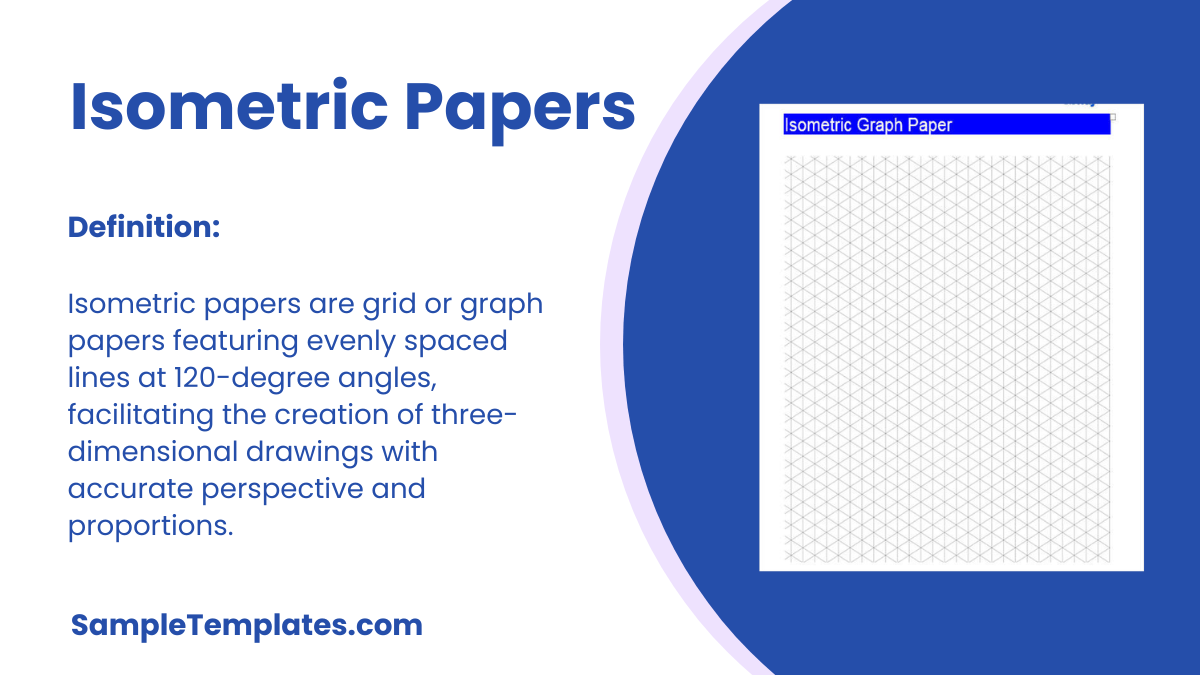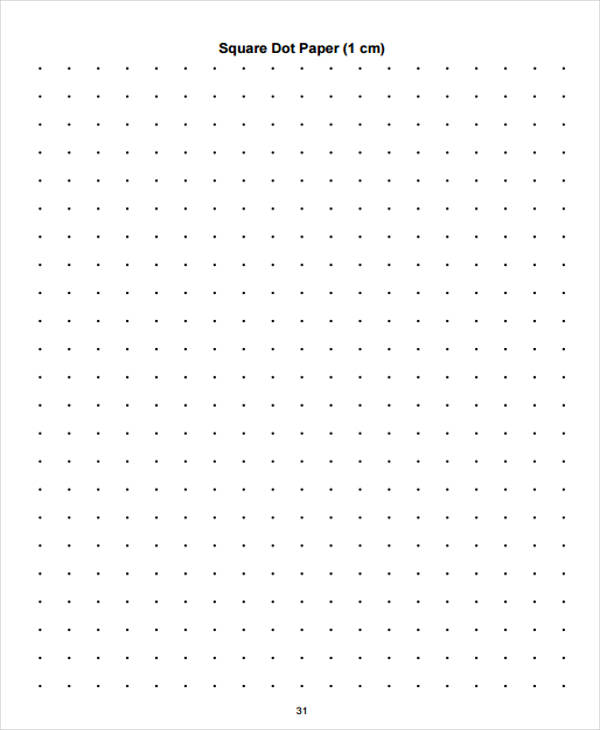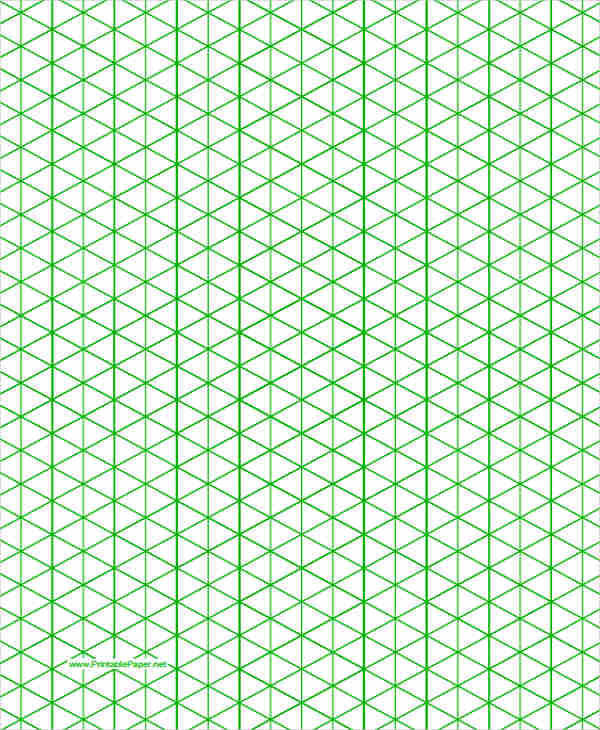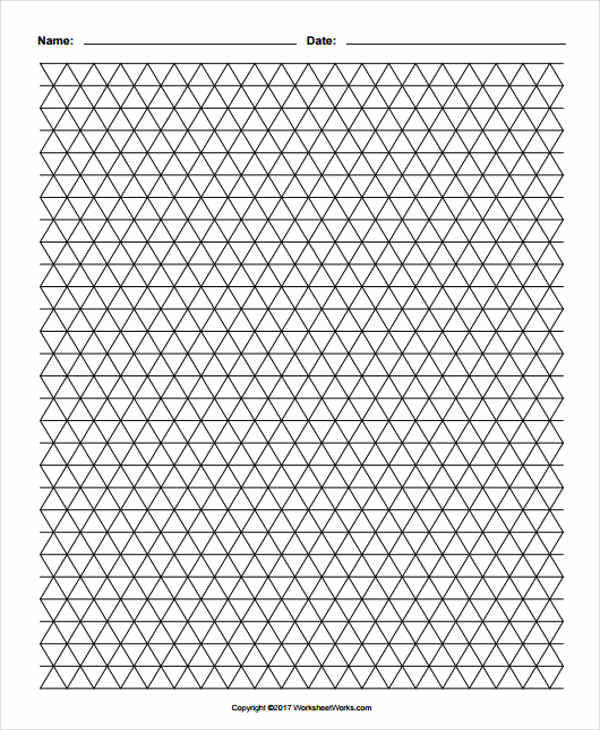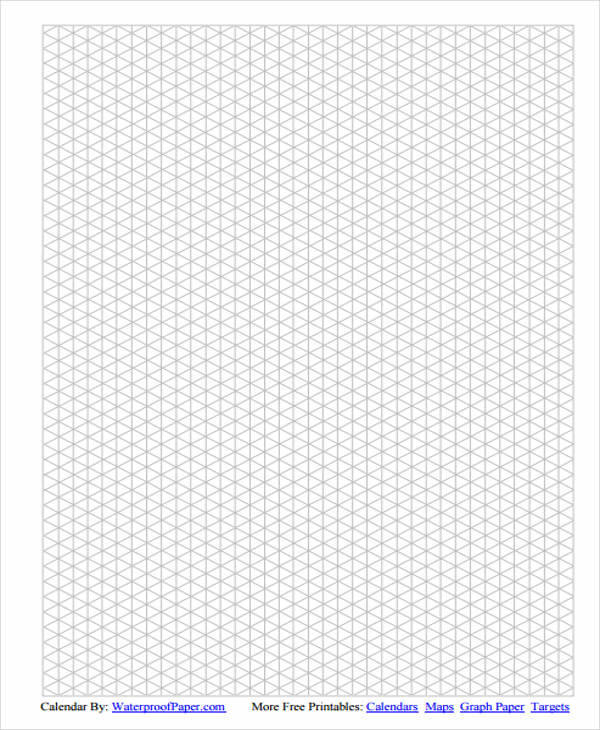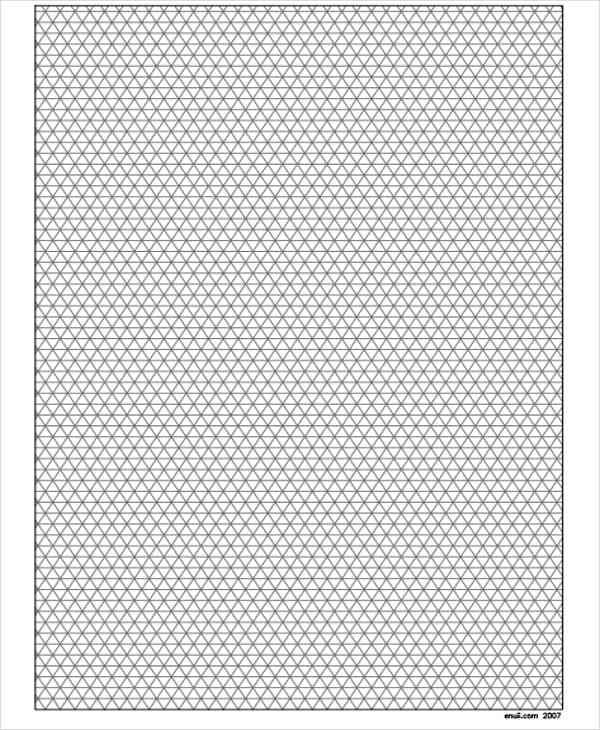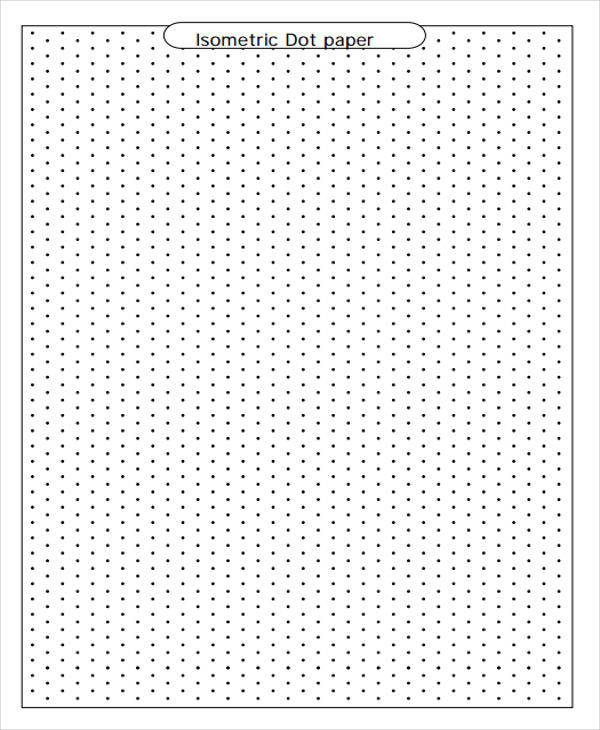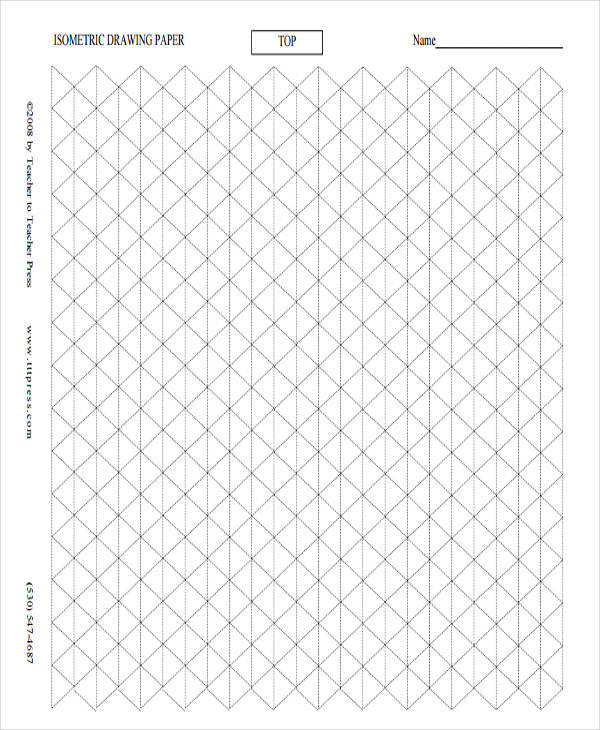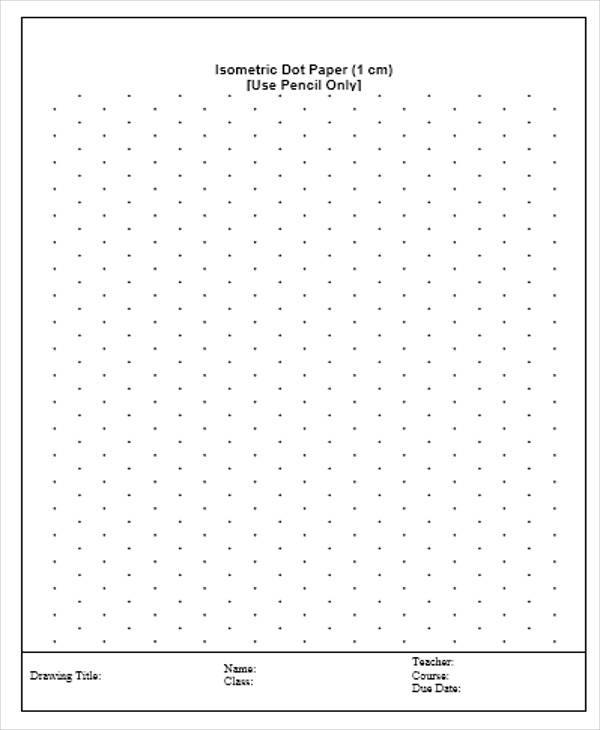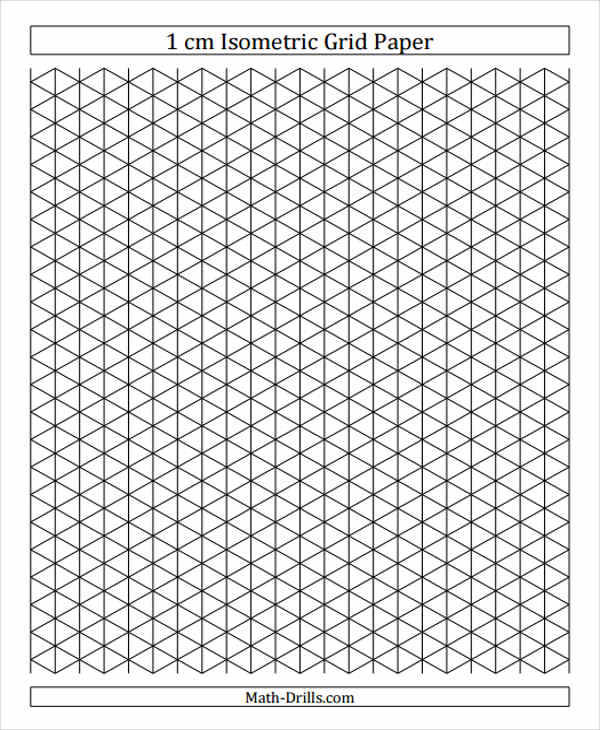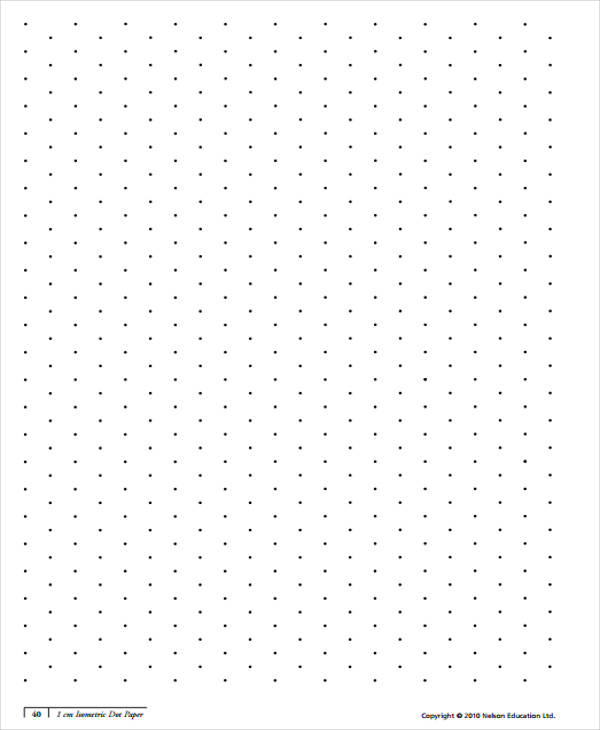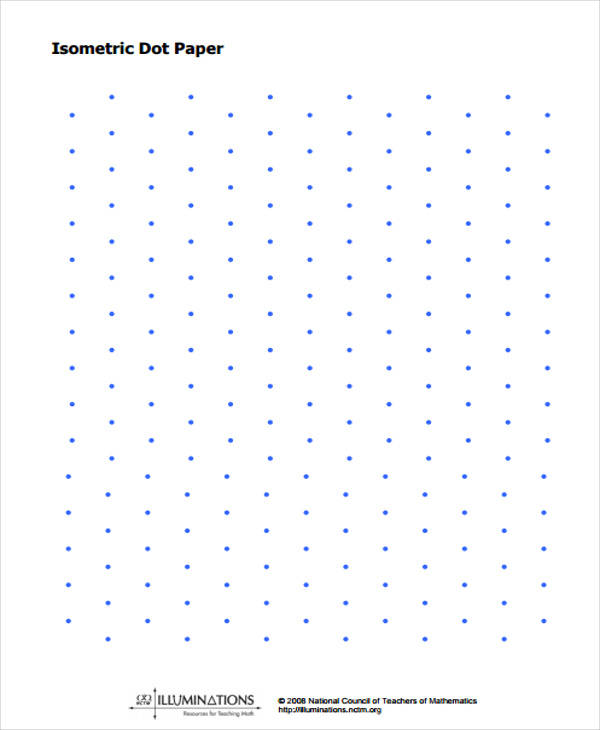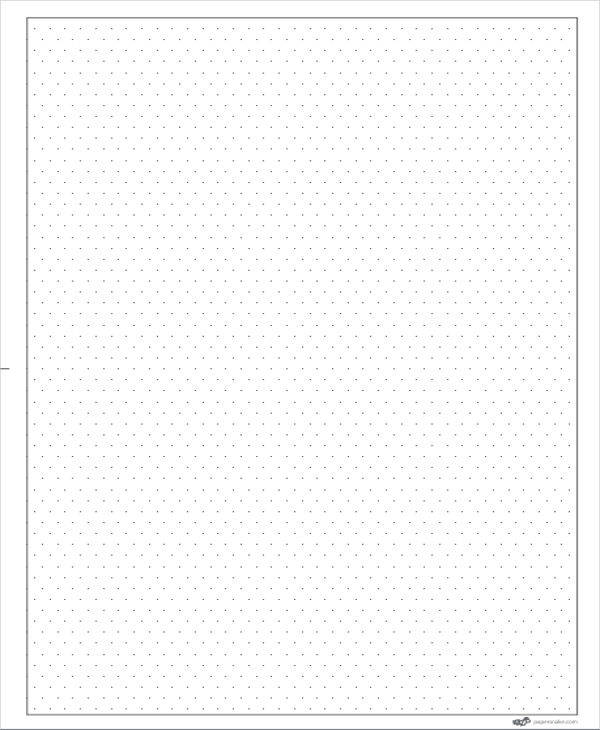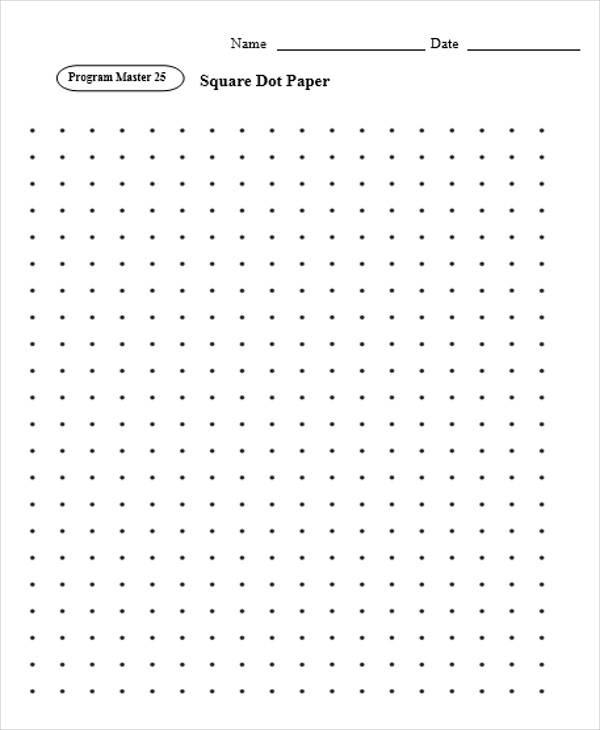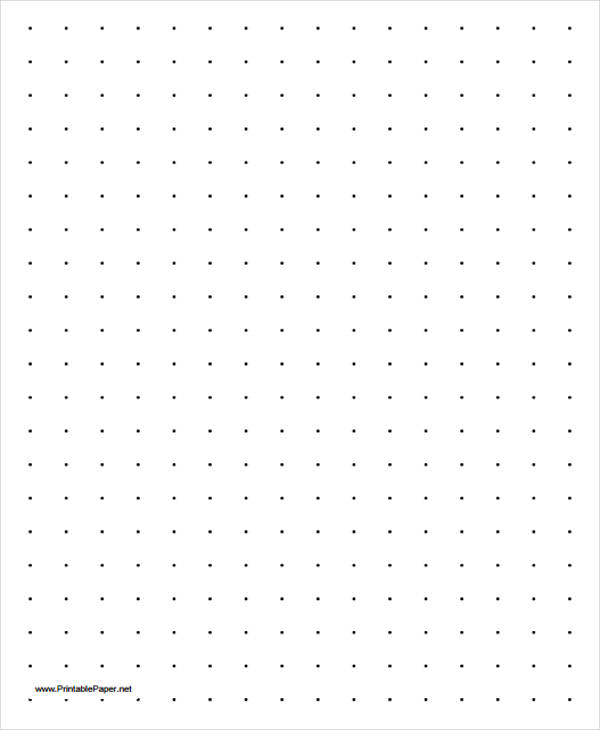You may have had encountered a paper filled with squares or dots and do not know what the reasons are why it’s made as such. These papers are called isometric papers, which serve a lot of purpose depending on a field of study requiring this paper.
Commonly noticed for its convenience and accuracy of measurement you may wonder what is the isometric graph paper used for? In a scientific and mathematical setting, this paper is used to draw graphs using problems or hypotheses as bases for such information. This serves as a visual representation of mathematical and scientific findings.
Isometric Paper
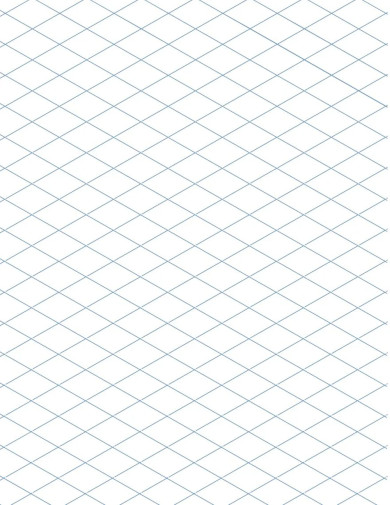
Isometric Dot Paper
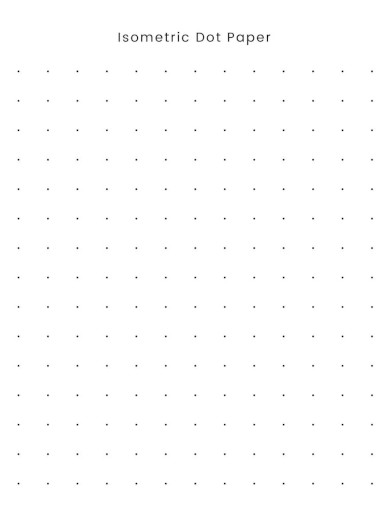
Isometric Sheet PDF
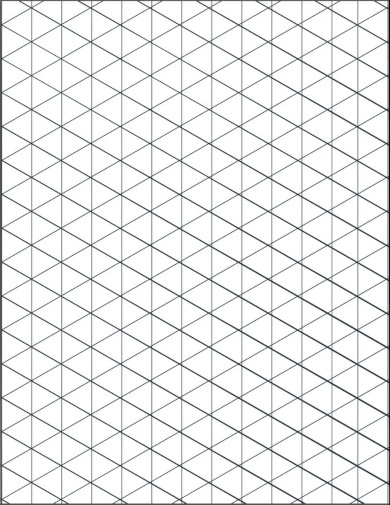
Isometric Dot Paper PDF
Isometric Sheet
Isometric Paper PDF
Isometric Dot Paper Printable
Isometric Paper Printable PDF
Isometric Paper Download
What Does Isometric Paper Look Like?
In comparison with the intermediate papers that are used by students in grade school until college, isometric papers are patterned rather uniquely. Although isometric papers are classified differently depending on the required output, there is a pattern in it that makes it distinguishable to other papers. This article provides a variety of printable papers to help you out with your projects and experiments. Using these templates, isometric dot paper templates to site an example, can help you make accurate output when it comes to measurement.
Isometric dot papers have different formats. In some universities in North America, professors require their students to use engineering papers, which is often termed as engineer’s pads. This paper’s grid lines are printed on the back side that shows lightly in the front page, making an output clearer compared to others using a different isometric paper.
In a technical field, a millimeter paper is used for its number of squares per centimeter and is helpful for visual communication in technical drawings. Besides the common square-patterned isometric papers, isometric graph paper or 3D graph paper uses a triangle, which is accurate in drawing angles. Always remember that a graph paper to be chosen is dependent to its output.
Isometric Paper A4 Printable PDF
Isometric Drawing Paper
Isometric Graph Paper
Isometric Sheet Download
Tips for Drawing on an Isometric Paper
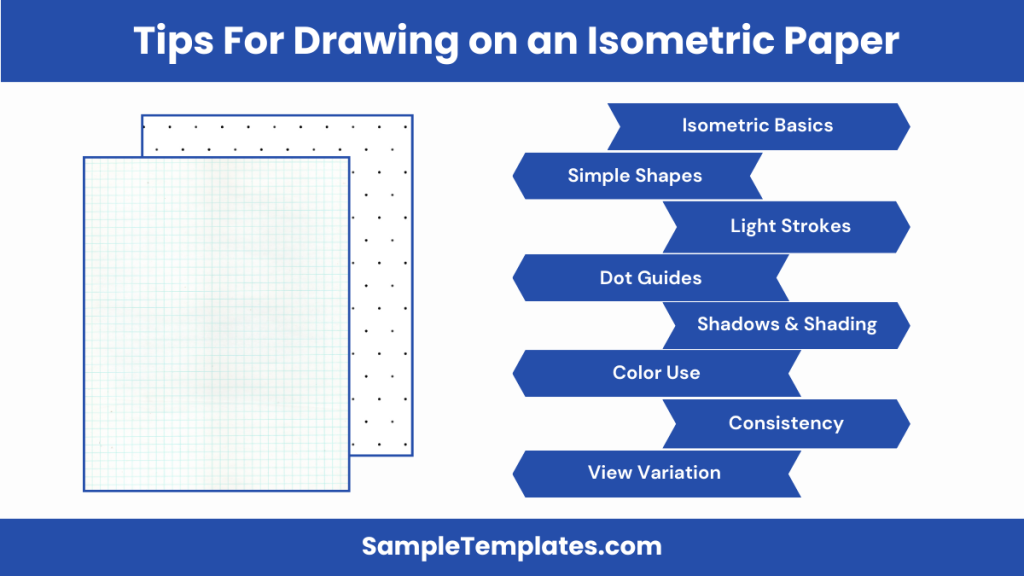
In a bond paper, it is extremely hard to set your limits in drawing an object, especially if you are particular about the measurements of an output. By simply using isometric graph paper, the job gets done in no time without hesitating about setting the limits of your output. A series of patterned sixty degrees of small triangles are found in this paper consisting three guidelines compared to quadrille paper, which has four guidelines. Unlike any other graph papers, hexagon graph papers that are commonly used for tessellated designs taking advantage of its hexagon patterns to cite an example, the isometric graph paper is used for three-dimensional drawings providing perfect balance and measurement of a three-dimensional object.
- Understand Isometric Projection: Familiarize yourself with the concept of isometric projection, where the three axes are equally spaced at 120-degree angles. This knowledge will help you accurately represent three-dimensional objects.
- Start with Simple Shapes: Begin your drawing with simple 3D shapes like cubes and cylinders. Mastering these will provide a solid foundation for creating more complex objects.
- Use Light Pencil Strokes: Start with light pencil strokes to sketch your basic shapes. This makes it easier to correct mistakes without leaving marks on the paper.
- Follow the Dots: The dots on isometric paper serve as a guide for maintaining proper angles and proportions. Use them to ensure your lines are parallel and correctly spaced.
- Enhance with Shadows and Shading: Add shadows and shading to your drawing to give it depth and realism. Determine a light source direction to maintain consistency in shadows across all elements of your drawing.
- Incorporate Color Thoughtfully: If adding color, consider the material properties of the objects you’re depicting. Use colors to differentiate between elements and add realism to your drawings.
- Practice Consistency: Ensure that all parts of your drawing follow the same isometric projection rules for a cohesive and accurate representation. Consistency in angles and line lengths is key.
- Explore Different Views: Experiment with drawing objects from different angles to get a comprehensive understanding of their structure. This will also add dynamism to your work.
Isometric Dot Paper A4 Printable
Printable Isometric Paper
Printable Isometric Dot Paper
Isometric Paper
Isometric Paper Images
Isometric Dots
Virtual Isometric Dot Paper
Virtual Isometric Graph Paper
Virtual Isometric Example
Square Isometric Dot Paper
Free Printable Square Isometric Paper
Square Isometric Sample
How to Draw on Isometric Paper
Drawing on an isometric paper is a lot easier compared to drawing on intermediate papers or bond papers. Guidelines are already provided making the task easy and, thus, consumes less of your time. With the help of this paper, it reduces mental stress because you no longer need to think if the lines you are making are parallel or if a line is completely proportional to the rest. To simply put it, a complex task is reduced to rather a smooth one.
These papers have been proven useful by professionals who are practitioners of experimental studies and of technical designs, and is highly recommended to those who plan to pursue such professions. We offer a variety of downloadable and printable graph paper templates here to help you manage your projects and assignments easily. Guidelines regarding how to draw on isometric paper are as follows:
- Prepare all vital materials needed for sketching. It is advisable to use a pencil should a mistake be committed.
- Carefully visualize the space needed for your subject or you may put numbers in each dot (if you are using a dot graph paper) to set your limits if this method helps.
- Simply draw your subject by following the guidelines in a graph paper.
Vertical Isometric Paper
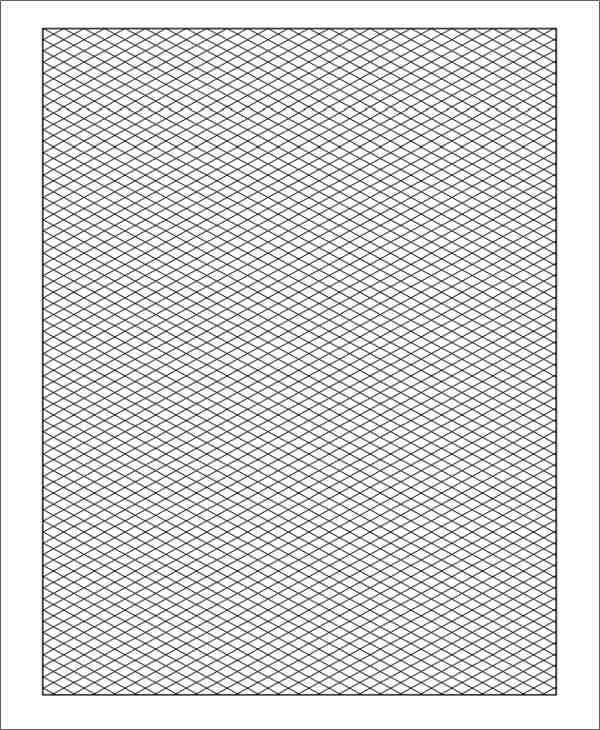
Isometric Dot Paper Download
Sample Isometric Dot Paper
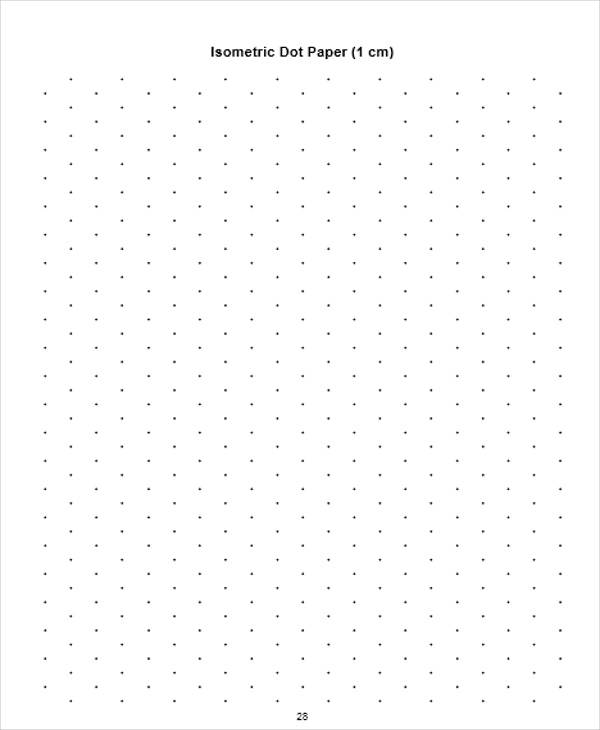
Isometric Guidelines
Isometric graph papers are a composition of three guidelines, which is entirely different from quadpaper or quadrille paper, which has four, although similar in purpose. As what can be observed in an isometric paper template found below, a collection of triangles are used instead of squares. If you look at the triangles carefully you will know that the small triangles measure sixty degrees. This type of paper is commonly used for technical designing and engineering drawings. Its unique pattern helps these professionals measure their output in a careful manner.
The guidelines are what makes a graph paper convenient to use. In an isometric drawing, precise measurements must be applied, that is why a ruler or other materials used for measurement is required in drawing the desired objects. The guidelines are not only limited to drawing three-dimensional objects, in fact, if a detail needs to be added in an object, the guidelines also come in very handy by limiting the size of a detail to be added in the object.
If there is an invention that requires sample planning, the isometric paper comes in useful by using it as a blueprint of a certain project. Most individuals prefer using isometric paper with dots as guidelines because they find it neat and not too hard on the eyes because of its fine print
What is Isometric Paper Used For?

Isometric grid paper, is a type of paper with a grid of evenly spaced lines that create a three-dimensional coordinate system. The lines on isometric paper are typically laid out in such a way that they form equilateral triangles, with 60-degree angles between each line. This unique grid pattern makes isometric paper useful for various purposes, including:
- Technical and Engineering Drawings: Isometric paper is commonly used in engineering, architecture, and technical drawing to create three-dimensional representations of objects and structures. The isometric grid helps in accurately depicting the height, width, and depth of an object, making it easier to visualize and design complex structures or machinery.
- Design and Drafting: Graphic designers and artists often use isometric paper to create three-dimensional sketches and drawings. It allows them to maintain consistent proportions and angles, making it ideal for creating isometric illustrations and designs.
- 3D Modeling: Isometric paper can serve as a helpful tool when planning and sketching 3D models for various applications, such as product design, game design, or architectural modeling.
- Geometry and Mathematics: Isometric paper can be used for teaching and learning geometry and mathematics, particularly when working with three-dimensional shapes, perspective, and spatial reasoning.
- Craft and DIY Projects: Isometric paper is used in craft projects, including paper modeling and origami, as the grid helps create accurate folds and angles.
- Map Making: Isometric graph paper can be used for creating isometric maps, which are often seen in video games or tabletop role-playing games (RPGs) to represent three-dimensional terrain and structures.
- Prototyping: In product design and prototyping, isometric paper can help visualize and plan the layout of components and their relationships in three dimensions.
- Education: Isometric paper is a valuable tool for teaching and demonstrating concepts related to 3D geometry, perspective, and spatial reasoning in educational settings.
Isometric paper is versatile and useful for a wide range of applications where three-dimensional representations and precise measurements are required. It simplifies the process of creating accurate isometric drawings and designs.
What is the meaning of isometric paper?
Isometric paper refers to a type of graph paper or grid paper that has a specific grid pattern. The term “isometric” in isometric paper signifies that the grid lines are arranged in a way that follows an isometric projection. Isometric projection is a method of representing three-dimensional objects in a two-dimensional space with a particular geometric arrangement.
The key features of isometric paper are as follows:
- Equilateral Triangles: The grid on isometric paper consists of a series of equilateral triangles, which have all sides of equal length and all angles of 60 degrees. These triangles are aligned in a regular pattern across the paper.
- 3D Coordinate System: Isometric paper allows you to create drawings and diagrams that represent objects in a three-dimensional space. The grid lines help maintain the correct proportions and angles required to depict objects in this manner.
- Visualizing 3D Space: By using isometric paper, you can create drawings and designs that show the height, width, and depth of objects accurately. It is a helpful tool for visualizing and working with three-dimensional objects on a flat surface.
What paper is used for isometric drawings?
Isometric drawings are typically created on a specific type of paper called “isometric paper” or “isometric graph paper.” Isometric paper is designed to assist in the creation of accurate isometric drawings, which are representations of three-dimensional objects in a two-dimensional space. The key features of isometric paper include:
- Equilateral Triangles: Isometric paper has a grid of equilateral triangles, with 60-degree angles between each grid line. These triangles help maintain the correct proportions and angles necessary for isometric drawings.
- Three-Dimensional Coordinate System: The grid on isometric paper allows you to work with a three-dimensional coordinate system, making it easier to depict the height, width, and depth of objects accurately.
- Visualizing 3D Space: Isometric paper aids in visualizing and drawing three-dimensional objects on a flat surface, which is particularly useful in engineering report, architecture services, and technical drawing.
Isometric paper can be found in various sizes and formats, including letter-sized or larger sheets. It is widely available in stationery stores, art supply stores, and online retailers. You can choose the size and spacing of the triangles on the grid based on your specific needs. Common choices for the spacing between triangles include 1/4 inch, 1/8 inch, and 1/10 inch, depending on the level of detail required for your drawings.
When creating isometric drawings, it’s important to use isometric paper to ensure that your sketches or designs accurately represent three-dimensional objects. This specialized paper makes the process of creating isometric drawings more convenient and precise.
How is isometric paper?
Isometric paper features a grid of equilateral triangles with 60-degree angles between each line, forming a three-dimensional coordinate system. This specialized graph paper aids in creating accurate isometric drawings by maintaining correct proportions and angles for height, width, and depth. The triangles represent the X, Y, and Z axes. Isometric paper is available in different sizes and grid spacings, typically 1/4 inch, 1/8 inch, or 1/10 inch. It’s a fundamental tool for engineers, architects, and designers, helping them visualize and depict three-dimensional objects on a two-dimensional surface with precision. It simplifies the process of accurately representing objects in isometric projection.
What is isometric dot paper?
Isometric dot paper is a type of graph paper with evenly spaced dots arranged in a triangular grid. It is used for creating three-dimensional drawings, providing a guide for accurately representing depth and perspective.
What is the angle of isometric paper?
Isometric paper typically features a 30-degree angle between its horizontal lines. This angle allows for a balanced representation of three-dimensional objects, facilitating accurate and proportional drawings with equal measurements along each axis.
Is isometric 30 or 45 degrees?
Isometric paper usually has a 30-degree angle between its horizontal lines. This angle optimally balances the representation of three-dimensional objects, providing a visually accurate and proportional perspective.
What is the perfect isometric angle?
The perfect isometric angle is typically 30 degrees. This angle creates a balanced representation of three-dimensional objects, allowing for accurate and proportional depictions with equal measurements along each axis.
In conclusion, isometric papers play a crucial role in the field of technical and artistic design. These specialized grids simplify the creation of three-dimensional drawings, fostering precision and efficiency. Whether used in engineering, architecture, or art, isometric papers provide a valuable tool for accurately translating ideas into visually compelling representations.
Related Posts
Retirement Speech Samples & Templates
Weekly Schedule Samples & Templates
Contractual Agreement Samples & Templates
FREE 9+ Amazing Sample Church Bulletin Templates in PSD | PDF
Sample Business Card Templates
Sample Cashier Job Descriptions
Questionnaire Samples
FREE 10+ Sample HR Resource Templates in PDF
FREE 10+ HR Consulting Business Plan Samples in MS Word | Google Docs | Pages | PDF
FREE 49+ Sample Job Descriptions in PDF | MS Word
FREE 16+ Nonprofit Budget Samples in PDF | MS Word | Excel | Google Docs | Google Sheets | Numbers | Pages
FREE 13+ Academic Calendar Templates in Google Docs | MS Word | Pages | PDF
FREE 10+ How to Create an Executive Summary Samples in Google Docs | MS Word | Pages | PDF
FREE 23+ Sample Event Calendar Templates in PDF | MS Word | Google Docs | Apple Pages
Company Profile Samples
